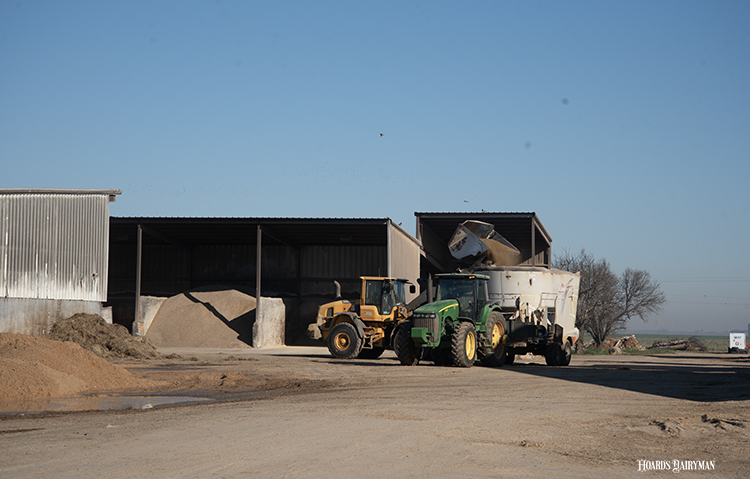
Dairy farmers strive to get the most return on investment from every asset on their farm. One part of the business that might be overlooked as an asset, though, is the feed center.
The feed center — with its storage facilities, daily traffic, and impact on animal performance — has a tremendous effect on farm profitability. Feed itself is the largest expense on dairies. A Cornell University study dug into the cost areas within that sector, and labor came out on top as the most expensive. In summarizing the study at the Professional Dairy Producers (PDPW) Business Conference, Kansas State University professor emeritus Joe Harner noted that labor made up 45% of the operating costs of a feed center.
Efficiency in the feed area begins with how employees’ time is spent, said Harner. Generally, 40% to 45% of the time spent on a load of feed is for loading ingredients, 20% to 25% is used for feed delivery, and the remaining time is spent doing chores including prepping, cleaning, and pushing up feed. In the same Cornell study, Harner explained that the least efficient farms spent more than an hour on each load of feed while the most efficient took only about 40 minutes.
What can be done to reduce the amount of time needed for each load? There are certainly employee considerations, but Harner emphasized that management decisions are what makes the jobs of those employees either easier or harder. “Most feed center problems are probably not the feeder’s problem,” he said.
This includes factors like the construction of the feed center, such as drainage, the height of the walls, enclosure, or traffic patterns that influence feed quality, shrink, and the ability of employees to do their jobs.
Harner described that efficient feed mixing can be achieved with practices like using traffic patterns that don’t cause interference between equipment, sizing mixers and loaders to match your needs, and looking into the use of premixing low inclusion ingredients or stationary mixers.
Reach an ingredient’s potential
Beyond the functionality of the feed center and the people working there, that asset’s return is affected by the quality and quantity of the ingredients it holds. Maintaining ingredient potential requires the same attention to detail as the milking center, Harner advised.
Feed quality may be lost due to spoilage and heating. Feed quantity can be reduced because of weather events, mixing errors, or product substitutions. Making prudent purchasing decisions and communicating changes to the feeder as they occur will help make the most out of each ingredient.
Harner proposed that instead of feed shrink, think about lost material as feed potential. Can more return be captured by reducing the amount of material damaged or lost to rain, wind, or inefficient handling practices? Though some feed will always be lost, it can be minimized. Harner cited that a farm with 8% shrink will spend the first 3 to 4 pounds of each cow’s daily milk production to pay back the cost of that lost feed. “That’s your opportunity,” he said.








